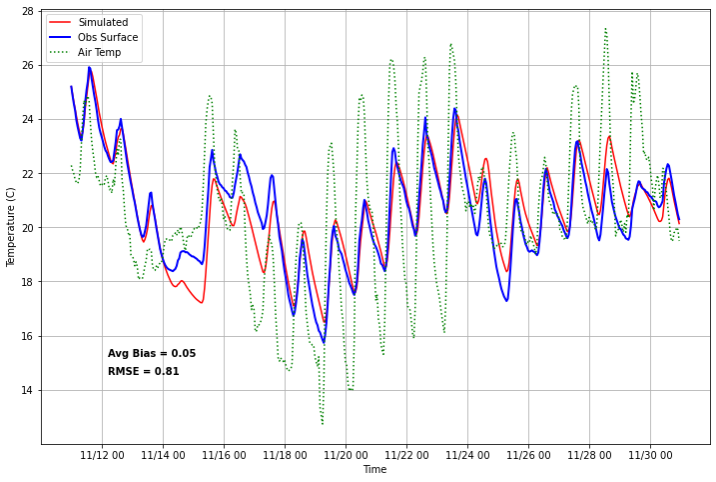Fish pond early warning system for cold snaps
Climate change and frequent extreme weather events, such as heavy rains and cold spells, have caused inconvenience to people and severe property losses in Taiwan's coastal areas. According to the Fisheries Administration's 2020 statistics, the annual production value of the offshore aquaculture fishery industry was about NT$27 billion. Taking the January 2016 cold storm event as an example, it caused losses of up to NT$2.1 billion to Taiwan's aquaculture and fishery industries. More than half of the fish farms in Tainan, including Qigu, Beimen, Xuejia, Tseungjun, Maidu, and Annan, were affected by the cold spell, with Beimen being the most severe, with 70% of the fish farms damaged. Tainan is the most important fish farm in Taiwan, and among fish species, milkfish are the most affected because they are the most intolerant to low temperatures. The results show that when the temperature drops to 13 ± 1℃ and lasts for more than 70 hours, the cultured milkfish begin to die. That is, if there is an appropriate early warning system in the future, it can provide early warning information and use it as the low temperature warning threshold for milkfish farming in Tainan to cope with cold damage, so that disaster prevention can be activated as soon as possible, which can effectively minimize the degree of subsequent related disaster damage.

In this study, the ENFIM model for predicting water temperature in fish farms was developed by referring to the assumption and model structure of heat conservation by Jonathan (2003). Further modifications were made according to Lamoureux (2006) and Jing and Kang (2017). The modified heat conservation equations for heat source and consumption in fish farms are shown in the figure above. The temperature change in fish farms over time is based on heat conservation (energy conservation). The heat radiation from the sun (qsolar) and the radiant heat from the air (qsky) are the heat energy sources, while the energy consumption is based on the heat convection (qconv), evaporation (qevap), and long-wave radiation (qback), and due to the bottom of the test site is silted, and considering the real fish farms are also silted, so the soil convection term due to the bottom silt is added. Therefore, the term qsoil, which is generated by the bottom mud, is also added to the equation.
The following figure shows the preliminary results of the temperature comparison between the simulated temperature and the observed temperature at a fish pond. The Root Mean Square Error (RMSE) of the simulated temperature and the observed temperature at the water surface from November 12 to December 1, 2023 was 0.81°C, and the average bias was 0.05°C. The model performance was similar to that of the relevant literature with an error of 1°C.

The following figure shows the circuit board design of the sensor developed by this project. This sensor can monitor temperature and humidity, and finally, through power management, it can achieve energy saving and the longest monitoring time. At present, the sensor is set to monitor every ten minutes and can save the records of water level depth, temperature and humidity of the fish pond to the microSD card in the sensor. The sensor will enter sleep mode to save power after the monitoring is completed. In the future, the sensor will upload the observation data including water temperature and water depth to the cloud platform, which will be used to predict the water temperature of the fish pond in the future.

